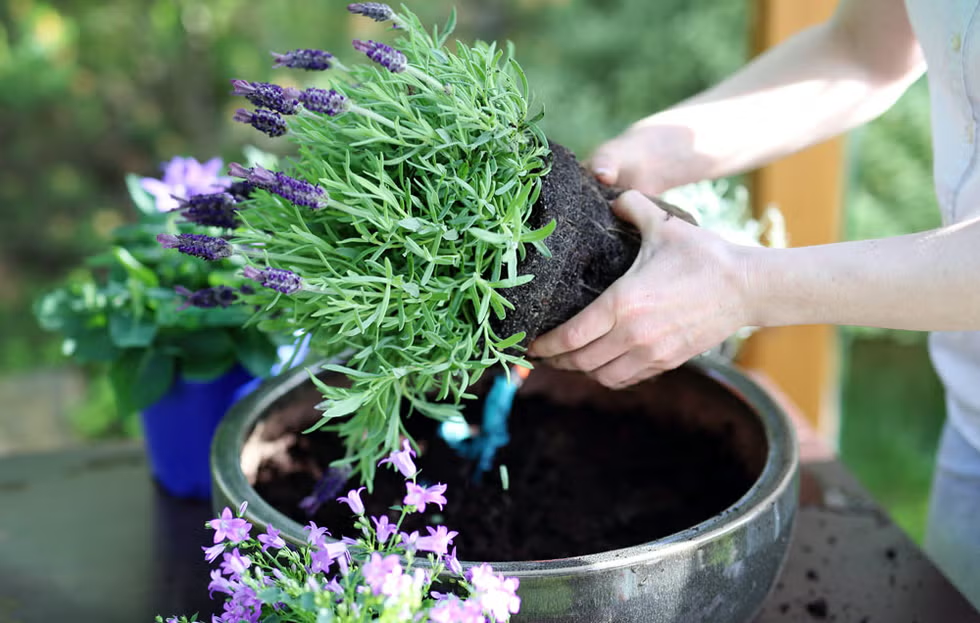Plant containers are an essential part of gardening, whether you’re working in a spacious garden or on a small balcony. The right plant container provides the ideal environment for root growth while also making it easier to maintain and care for your plants. In this article, we’ll explore the best types of plant containers, how to choose the right one, and the key features to look for to ensure your plants remain healthy.
Types of Plant Containers
Traditional Pots: Materials and Their Benefits
Traditional plant pots come in several materials, including plastic, clay, and terracotta. Each has its benefits and drawbacks. Plastic pots are lightweight and inexpensive, making them an ideal choice for those on a budget. Also, they keep water better than clay pots, which makes them better for plants that need regular water. Ceramic pots, on the other hand, let air flow better and are great for plants that need good draining. Terracotta pots look natural and worn, but they can be heavy and cost more.
Self-Watering Planters
Self-watering planters are designed with a water reservoir at the bottom, which allows the plant to absorb water as needed. These containers are great for plants that require consistent moisture levels. Self-watering pots also need less watering, which makes them great for gardeners who are always on the go or people who move a lot.
Hanging and Wall-Mounted Containers
Hanging baskets and containers that you can place on the wall are great options for gardeners who don’t have a lot of room. These types of containers are ideal for small flowering plants, herbs, or even strawberries. Hanging containers also add a unique visual element to your garden and are great for creating vertical gardens.
Indoor vs. Outdoor Plant Containers
Indoor plant containers are typically smaller and designed to complement interior decor, while outdoor containers need to withstand the elements. Outdoor containers are generally larger and more durable, allowing for the growth of plants like shrubs or small trees. When choosing an indoor pot, it’s important to pick one that fits the style of your home and meets the needs of your plant.
How to Choose the Perfect Plant Container
Consider Plant Size and Root Growth
The size of the container is critical to plant health. Plants with large root systems require larger pots, while smaller plants need smaller containers. It’s important to choose a container that allows the roots to grow freely without becoming root-bound. Too small a container will restrict root growth, while too large a pot may result in overwatering.
Drainage: Why It’s Crucial for Your Plants
Proper drainage is one of the most important factors in plant container selection. If the container doesn’t have drainage holes, water can pool at the bottom and cause root rot. Pick a jar that always has holes in it for drainage. You can easily add your own with a drill if the container doesn’t have them already.
Light and Temperature Considerations for Plant Containers
Different plants have different light and temperature needs. Some plants thrive in full sun, while others do better in partial or full shade. When choosing a container, make sure it is suitable for the plant’s sunlight requirements. Additionally, outdoor containers should be able to withstand temperature fluctuations, especially during the winter months.
Choosing the Right Material
The material of your plant container affects the plant’s health as well as the container’s durability. Plastic containers are easy to handle and affordable, but they don’t offer the same aesthetic appeal as ceramic or terracotta pots. If you’re growing plants that need good air circulation and drainage, opt for clay or terracotta containers.
The Best Features of Plant Containers
Easy-to-Clean and Long-Lasting Materials
Look for plant containers made from materials that are easy to clean and maintain. Plastic and glazed ceramic pots are often more resistant to dirt buildup than porous materials like terracotta. Additionally, durable materials will last longer and provide better value over time.
Aesthetic Appeal and Customization Options
Plant containers come in various styles, from sleek modern designs to rustic, vintage looks. Choose containers that complement your home or garden decor. Many gardeners enjoy customizing their plant pots with paint, decals, or even wrapping them in natural materials like burlap for a more organic feel.
Eco-Friendly Plant Containers: Sustainable Choices
With an increased focus on sustainability, eco-friendly plant containers are becoming more popular. Biodegradable pots made from coconut husks, bamboo, or recycled materials are great choices for environmentally conscious gardeners. These containers decompose over time, reducing waste and benefiting the planet.
Caring for Your Plant Containers
Proper Watering Techniques and Drainage
Proper watering is crucial for healthy plants. When watering your plant containers, make sure water can drain freely from the bottom. Root rot can happen if you water too much, and root rot can happen if you water too little. It is important to water plants enough but not too often. It is also suggested that you use a saucer to catch any extra water.
Keeping Your Containers Clean and Free from Disease
Cleanliness is important for preventing disease and pests. Regularly wash your containers with mild soap and water to keep them free from algae, mold, and pests. Disinfecting your containers before replanting can also help eliminate any lingering plant diseases.
Tips for Replanting and Rotating Plants in Containers
To prevent plants from becoming too root-bound or outgrowing their container, rotate and replant them as needed. A healthy rotation system can also help avoid nutrient depletion and ensure that your plants have enough room to grow.
Conclusion
If you want to grow plants successfully, you need to find the right pots. You can make a great place for your plants to grow by thinking about things like material, size, ventilation, and how it looks. For plants to grow well, you need to choose the right plant pots, whether you garden inside or outside.

